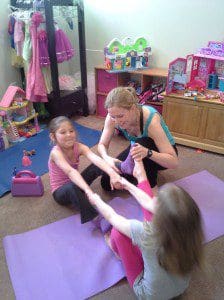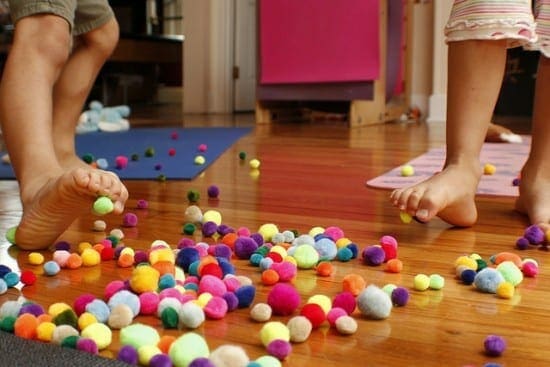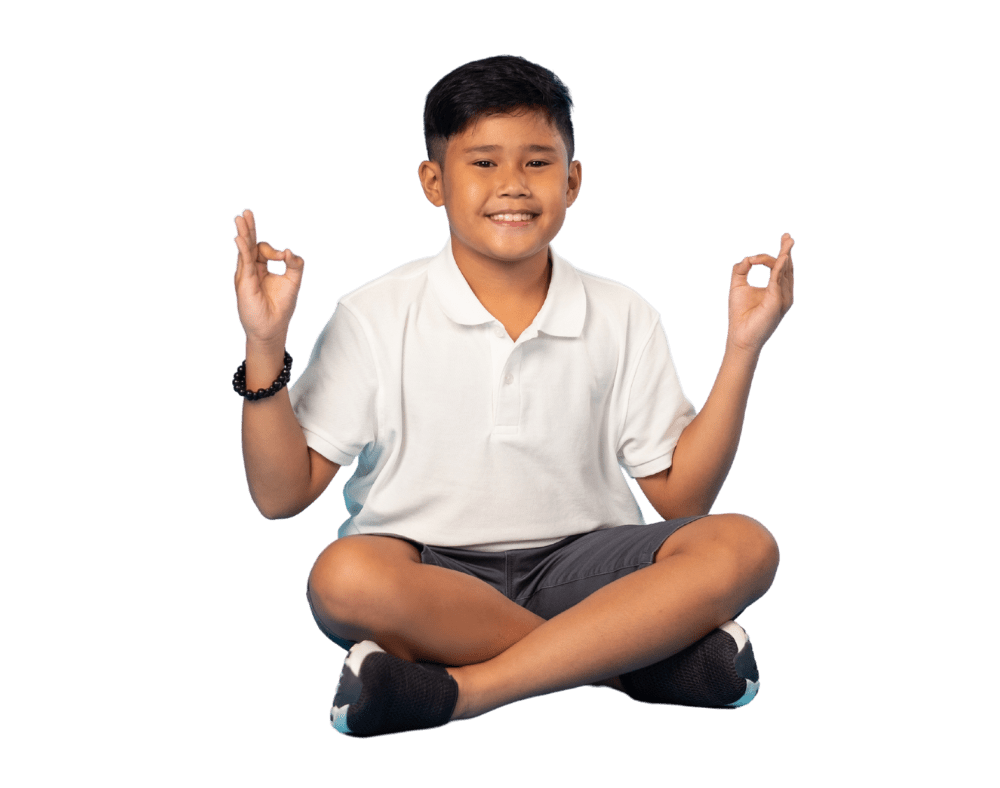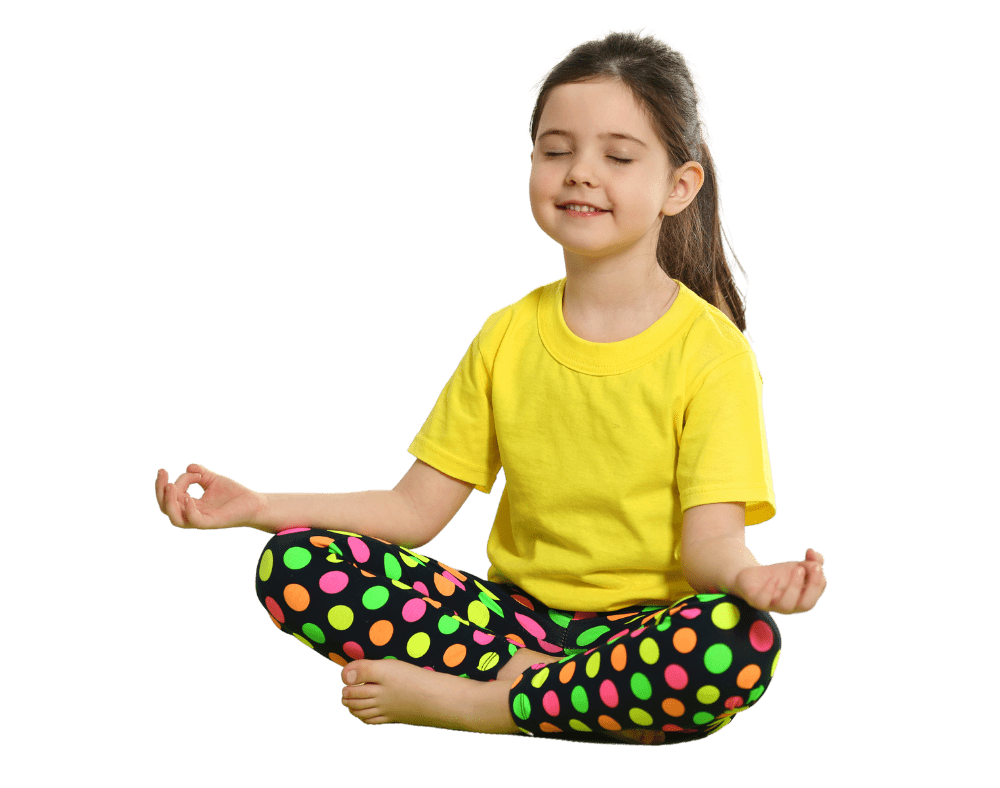 I work with children between the ages of four and six. All of them have Autism diagnoses, and some also have ADHD. Any time I think I’m having a stressful day, I am quickly humbled when I think of the kids I work with who are in an almost constant state of stress or anxiety. On a daily basis, I see them struggle with the daily stressors that take over ANY child, intensified by the symptoms of their diagnoses. They need to work extra hard on things that most children take for granted: peer interaction, sitting in a chair, following directions, even playing with toys.
I work with children between the ages of four and six. All of them have Autism diagnoses, and some also have ADHD. Any time I think I’m having a stressful day, I am quickly humbled when I think of the kids I work with who are in an almost constant state of stress or anxiety. On a daily basis, I see them struggle with the daily stressors that take over ANY child, intensified by the symptoms of their diagnoses. They need to work extra hard on things that most children take for granted: peer interaction, sitting in a chair, following directions, even playing with toys.
The chaotic nature of our world doesn’t make much sense to people on the Autism Spectrum—they thrive on routine and order. When their environment feels out of control, it can be scary and very frustrating, and that “fight or flight” feeling kicks in. A typical person is able to regulate that feeling after a few moments. Someone with Autism may not be able to regulate it well or at all, and it will only intensify throughout their day, leaving them feeling out of control and very out of touch with their bodies and minds.
One evening, while basking in the glow of a particularly restorative yoga session, I said to my husband, “I wish I could teach the kids I work with how to do yoga and meditate.“ And he said, “Why don’t you?” Good question.
As I did a little more research, I realized just how beneficial yoga can be for children, including children with special needs. Research shows that yoga increases focus and concentration, reduces stress and anxiety, increases balance and coordination, promotes self-confidence, improves sleep, and enhances imagination and creativity. Children with Autism and/or ADHD struggle in each of those areas. Teaching them yoga and meditation makes perfect sense.
Every component of the Kidding Around Yoga class is beneficial—from poses to meditation, pranayama to deep relaxation. These are all tools that any child can use to make a stressful day a little calmer, or to boost their moods when feeling sluggish. KAY uses songs, games and stories to make it fun. Sometimes the kids don’t even realize they’re doing yoga, they just know that when the class is over, they feel happy and relaxed.

After my KAY training, I was so excited to go back to work to share what I had learned with my kids.
If you have a child in your class with Autism or ADHD, it’s important to know his or her individual needs so you can make any necessary modifications to your routine. Communicate with the parents, who can give you insight into their child’s needs and also give you feedback after class. Even if the child has the ability to speak, it doesn’t mean that she will necessarily be able to tell you how she feels or if something is bothering her. Pay attention to kids’ non-verbal cues, like covering their ears, or isolating themselves in a corner of the room. Be flexible—you may need to modify an activity on the spot or even stop it altogether. Have the parents participate in the class as well so they can work on some of the breathing and relaxation exercises with their child at home.
Below are some tips for teaching yoga to children with Autism and/or ADHD:
Environment: Watch the volume of the music – maybe work out a signal ahead of time with the child so he can let you know if it’s too much. If you’re using Tingsha bells during your class, check in beforehand with a child who has auditory sensitivities. Let him ring the bells—he may be OK with the sound if he is the one controlling it.
Other things to notice: Is the room too bright? Too dark? Are the other kids too loud or are their voices too shrill? Does the room have a high ceiling that may carry sound in an uncomfortable way? Is the texture of the mat a problem? Does the child have issues with removing his shoes? Does he not like to be touched or have other kids too close by?
Transitioning: The class can be fast-paced. This may be too much for someone who processes a little slower than most. Give him a heads up a few seconds before you will be moving on to the next activity. You may even want to let him know before class which songs or games you will be doing that day.
You may find that a child with ADHD or Autism has a lot of difficulty in calming down after a particularly energizing song or activity. He may need some extra support regulating his body just to be able to sit down to start a more relaxing exercise.
Routine: This is very important for kids who feel out of control most of the time. The more predictable their day, the more calm and attentive they can be. KAY classes follow an outline, so once they’ve gotten used to the flow, the more secure they will feel during the class.
I’ll leave you with this: The other day, a child I work with was getting frustrated with his homework. Instead of crumpling his paper and throwing his pencil across the room, he independently stopped and took deep breaths until he was calm enough to give his homework another try. It made me feel great, knowing that I may have been a part of that victory. Imagine the feeling it gave him—knowing he was able to work through his frustration on his own and confidently move forward.
If you want to bring yoga and meditation to ALL children, take a look at KAY’s online specialty course, Acessible KAY!
Want more? Check out these blogs about inclusion and adaptive yoga:
Yoga and Occupational Therapy: https://kiddingaroundyoga.com/blog/yoga-and-occupational-therapy-2/
Adaptive Yoga for Children: https://kiddingaroundyoga.com/blog/adaptive-accessible-yoga-children-kids/
The Yoga Tree: https://kiddingaroundyoga.com/blog/kids-yoga-philosophy-yamas-niyamas/
You can also listen to an inspiring podcast about incorporating yoga into Special Needs classrooms: https://anchor.fm/kidding-around-yoga/episodes/Yoga-In-Schools-Part-3-How-Yoga-Can-Be-a-Powerful-Tool-in-Special-Education-e1jt21i
Like what you read here? There’s so much MORE to explore and learn with Kidding Around Yoga. Check out our website for our live and online teacher trainings, Yoga Alliance-approved 95-hour RCYT trainings, specialty online courses, original music, merchandise, podcast, and beyond! KAY even offers a 6-hour workshop designed to teach school educators and homeschool families how to bring yoga and meditation right into their classrooms (EduKAY) and an online course specifically for families to incorporate these practices in their family’s routine (Mindful Parenting)


